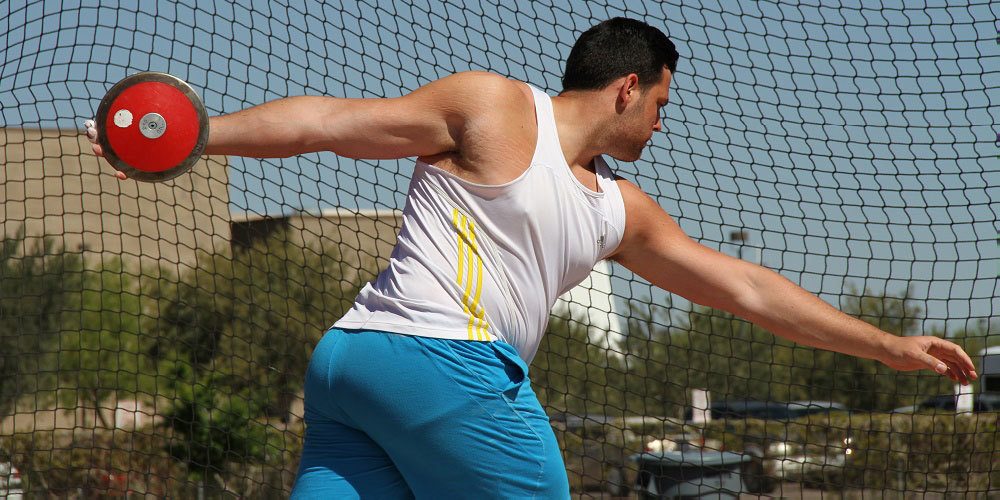This week’s blog-post – written by ALTIS throws coach – Nick Sheuerman looks into some of the fundamental components of developing successful throwers.
It is vital for throws coaches to have an in-depth understanding of the multitude of factors involved in successful performance in the throws. I have been honored to learn about these factors from a number of highly effective coaches at ALTIS, who have shaped my understanding of what it takes to perform with distinction in the throwing events. In this post I would like to outline some of these foundational tenets:
1. Balance
Balance is a term that is used daily in throwing events…
“You need more balance on your left”
“Get on balance”
“You fell off balance in the middle because your chest dropped”
… but do we understand what causes balance at various parts of the throw? When we take a closer look, there are a few key facets aligned to finding effective balance at any phase of the throw:
1a) Joint centralizing
Also known as alignment, or stacking, joint centralizing essentially means that at any particular phase in the throw, the joints are in the optimal positions to create the desired posture for that portion of the throw. For instance, in a stand throw the right knee should be on top or in front of the right toe, the hip should be on top of the heel, and the chest should be somewhere on top of the knee. When the joints are aligned in proper fashion, the athlete has the best chance to express optimal movement quality (which we will discuss in the next section).
In order to achieve these balanced positions, both athlete and coach must first understand what correct positions look like throughout the throw. These positions depend somewhat on each athlete’s specific body type, co-ordinative qualities, strength, and somewhat on basic principles of motion. The dynamic interplay between the principles of general physics and athlete’s body type is what we would call bandwidth. This simply means that there is no one right way to throw; however there is a bandwidth of acceptable positions for each athlete that incorporates body type and movement style, whilst adhering to the general laws of physics.
1b) Movement Quality
Once the coach and athlete understand the basics of balance and joint positions in each phase of the throw, movement quality can be addressed. Only with effective balance and positions can effective movement quality be achieved; this cannot be stressed enough. Not only does improper balance lead to less than optimal throws distances, it also more often than not leads to overuse injuries.
In order to encourage proper movement quality, one must understand how the body learns to move (motor learning). At ALTIS, one of the most powerful methods at our disposal to maximize motor learning is to manipulate the external environment around the athlete. This means we use dowels, cones, hurdles, and other tools to encourage proper posture, balance, and rhythm. We find that manipulating the environment – in combination with well placed cues – is quite often more effective than using only cues to effect movement quality.
2. Strength
Strength is a critical component of effective throwing, and in order to achieve top level distances, specific strength qualities must be addressed. Both maximum strength and power are important factors in developing world class throwers; for instance, in our shot putters we like to see at a 1 rep max 500lb bench press, a 600lb back squat, and a 180kg – 190kg clean. Not all athletes will achieve each of those numbers, but the closer we get to an athletes’ maximum strength levels, the better we can predict that they will achieve top level distances.
3. Implement Velocity
Arguably the most significant factor in throws distance is the velocity of the implement at release. It is imperative that the coach and athlete consider all the elements above in a way that creates the highest release velocity possible. Release velocity can be trained via a number of methods. In the weight room, speed strength can be trained by moving relatively light weights at high velocity. While the weight used is light compared to maximal strength weights, it is still heavy compared to the competition implement. In order to achieve maximum throws velocities, it is widely accepted practice to incorporate light implements into training. For a collegiate or professional shot putter, this might mean throwing a 14 or 15lb shot at various times of the year/cycle in order to maintain and encourage high release velocities. The combination of weight lifting with velocity in mind, as well as throwing with velocity in mind should result in higher release velocities and ultimately farther throws.
While there are many more factors to be considered in developing throwing athletes, the goal of this post is to provide the reader with a brief of insight into our basic philosophy and methods. If you have any questions, please feel free to contact me at n.sheuerman@altis.world


